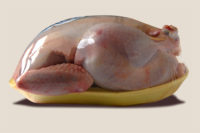TECH FLASH
The case against corn ethanol
As more ethanol producers close, an economist asks if corn ethanol mandates make sense.


In 2012, 20 ethanol producers shut down as drought and market competition made it nearly impossible for small, less efficient ethanol producers to maintain profitability. Wallace Tyner of Purdue University’s Agricultural Economics department told Living on Earth Host Steve Curwood that’s because ethanol producers are hitting a “blend wall.”
That wall results from the disparity between the 13.3 billion gallons of ethanol used annually in the US and the 14.9 billion gallons the industry has the ability to produce. Those 13.3 billion gallons have been incorporated into gasoline by federal mandate at 10 percent by volume, and although EPA has approved 15 percent ethanol fuel for cars manufactured after 2001, only a fraction of gas stations have changed out their pumps.
Last year’s drought conditions also caused problems for ethanol producers. Tyner says that because ethanol pricing is pegged to corn rather than gasoline, drought caused the cost of corn production for both food and ethanol to rise significantly. And since that ethanol pricing is based on a break-even basis with corn, only the most efficient producers can turn a profit.
High levels of biofuel production have coincided with increased demand for meat in developing countries, combining to contribute to increased corn prices. Tyner says 40 percent of corn produced in the US goes into ethanol plants, although about a third of that ends up being fed to animals as distiller’s grain. The net 27 percent of corn going to ethanol puts the US comfortably in the global ethanol production driver’s seat.
Between high production and competition, Tyner says, “it is really tough to make money in ethanol today.” With ethanol prices now linked to corn, the same could be said for traditional grain farmers as well.
Looking for a reprint of this article?
From high-res PDFs to custom plaques, order your copy today!






